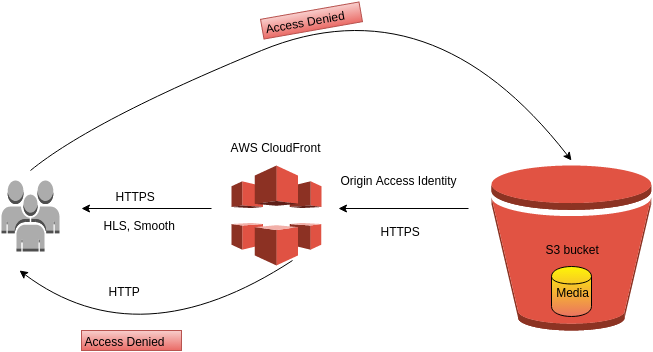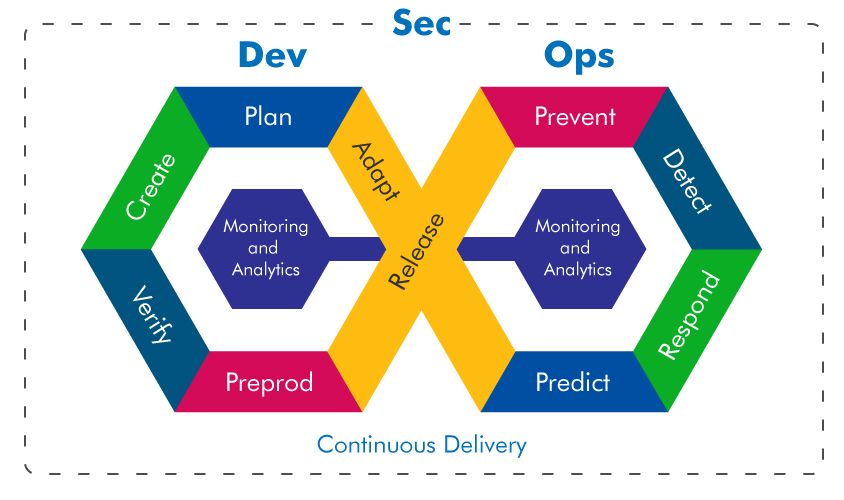Introduction
Any software’s success, as well as that of the company that creates it, the companies and the people who use it, depends on security. However, security procedures were previously neglected. These hitherto manual processes were frequently postponed until the last minute, took too long, prevented the delivery of features, and failed to adequately guard against the expanding range of vulnerabilities.
The incorporation of security into DevOps procedures is known as DevSecOps. To make security verification a continuous phase of the software development life cycle (SDLC), it repeats and automates code scans and tests. It makes use of several DevOps techniques to make sure that internal requirements and adherence to industry standards are integrated and taken into account at every stage of the development process.
Let’s examine how security fits into DevOps in this blog post, the security concerns that DevOps presents, and why security should be much more than an afterthought. Let’s then examine the actions that can be taken to begin incorporating security into DevOps processes.
What is DevSecOps?
Security used to be considered a secondary system, something that was added in after the SDLC was complete. This implies that the majority of security flaws aren’t fixed until practically the end of development, or worse, after release.
To ensure that everyone is responsible for the security and is held accountable, DevSecOps calls for a substantial shift in mindset. It is simple to see that security should be integrated into the DevOps toolchain as a common practice with a “security-first” mentality, part-automated and with little disturbance to operations.
Continuous Integration (CI) and Continuous Delivery (CD) are DevOps procedures that have been included in the SDLC to guarantee that code is actively tested and verified before being deployed to an environment in an agile development process.
Continuous Security Audits and Vulnerability Testing are used by DevSecOps to ensure that security is integrated into the product rather than being added after it has been created. Vulnerabilities are pervasive due to the advent of open source, which is present in 99% of audited codebases. With thousands of new releases occurring every day, manual administration is just not an option. To fix these breaches, organisations must act swiftly. The developers will have to spend a week or more fixing the known OSS flaws in their code when a PenTest report or a private Bug Bounty report is obtained.
Fortunately, DevSecOps is causing the software sector to shift left. Deployment may go more quickly and safely as security procedures become increasingly automated and are handled directly by the development team, complementing the rapid-release cycles already widespread in the sector.
Importance of DevSecOps
Software must be secure and suitable for its intended use. We all rely on technology, and security flaws pose a very serious risk to how we do business, exercise government, communicate, and live our daily lives. Everyone is vulnerable, including big enterprises, the public sector, and small firms. Additionally, a security breach can have detrimental effects on organisations, including the misuse or loss of intellectual property, revenue loss, unanticipated expenditures associated with the breach, and reputational harm.
An ongoing security-focused delivery collaboration is facilitated by SDLC which also makes sure security experts and their efforts are not overlooked. Insecurities will be embedded into the product from the beginning rather than being found at the last minute and necessitating expensive revisions, resulting in more efficient cycle times. Unexpected problems might still arise at the last minute but they are far less likely now. Moving away from conventional security procedures also helps the company to establish credibility and client confidence.
Current Challenges for DevSecOps
Organisations strive to ensure that their software is secure, but due to the rapid speed of change, many have had trouble aligning their security strategy with the IT environment and development mindset. DevOps demands that large amounts of code be pushed and changed frequently, which is faster than the rate at which security teams can keep up.
Here are some additional security issues that DevOps raises.
- Containerisation and DevOps make it simpler and faster to deliver software, by using fewer resources and managing it. But misconfiguration and other ingrained flaws, they can provide security threats to organisations. Because of this, businesses must integrate runtime container security safeguards across all development, testing, and production phases.
- Because of the dynamic nature of cloud-based platforms, even minor security flaws have the potential to swiftly turn into catastrophes. The toolkits used by development teams are diverse, highly integrated, and adaptable to the demands of different projects. If the proper security measures aren’t in place, there is a higher danger that account information, SSH keys, and API tokens may be hacked.
- DevSecOps fills the gap left by traditional security techniques, which are unable to satisfy DevOps’ demands.
Let’s examine some of the major issues that security and development teams are now dealing with, as well as how a DevSecOps methodology may be used to address them.
Security Team
Biggest challenge for security teams are both time constraints and the difficulty of collaborating with the development team to ensure that the task is done appropriately.
The first problem arises from the contrast between DevOps’ quick pace and the traditional security architecture assessment procedure’s slower pace. The procedure may be significantly delayed by these laborious manual operations. But DevSecOps provides an alternative. Many aspects of the threat modelling and evaluation process may be automated with the use of security management solutions. Every time a modification is made, corporate standards and industry compliance must be taken into account. Thus making it a quicker and a more reliable procedure.
The second problem results from ineffective communication and a lack of developer expertise in handling security needs. DevSecOps uses tools that let developers issue work tickets as part of their regular workflow to integrate security requirements into their code. In this approach, risks are addressed sooner and can be dealt with promptly and cheaply. Security is prioritised alongside functional demands.
Developers
In addition to the aforementioned workflow problems, automated testing is putting more strain on developers. After the source code has been built, scanning tools that provide Application Security Testing (AST) are utilised. The development team is responsible for handling a considerable level of risk and expense to the schedule if a scan turns up a significant number of faults.
But using only AST tools are insufficient. Instead of solely relying on scanners, security platforms can help define which tests are necessary, allowing developers to create custom tests that take into account each application’s particular vulnerabilities. This will ensure that any issues are addressed earlier in the SDLC, making the testing stage less precarious and painful for developers.




